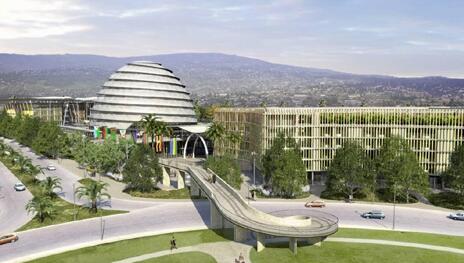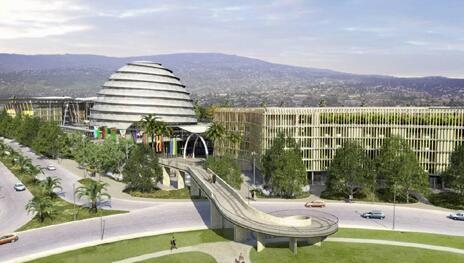
GUANGZHOU, July 24 (Xinhua) -- Every time Liu Wei sees the mountain gorilla magnet on his refrigerator, he recalls a journey in Rwanda, home to one third of the world's mountain gorillas.
Four years ago, Liu Wei and Wu Jie, two young urban planners with Guangzhou Urban Planning and Design Survey Research Institute (GZPI), and four other colleagues were invited by UN-Habitat to make conceptual master plans for Rubavu and Nyagatare, two sub-central cities of Rwanda.
"When I looked down through the window on the plane, I saw vast mountains everywhere," Wu said.
When the team arrived in Kigali, capital of Rwanda, Liu and his colleagues were surprised to find a very clean and well-planned city, contrary to everything they had imagined. But as they drove out of town, thatched huts and shacks became the norm.
"They reminded me of Chinese villages in the old days," Wu said.
After research, Liu found that existing plans in Rwanda put great emphasis on the beauty and function of architectural forms, but lacked an overall vision.
"China is the largest developing country in the world. In the past 40 years, we gained a lot of experience in urban planning under difficult and complicated conditions," Liu said.
"We think our experience can help Rwanda set up an urban planning strategy," he added.
After assessing the existing plans with the Rwandan Ministry of Infrastructure, the team came up with a framework focusing on urban development, structure, neighborhood and implementation and made five proposals.
The proposals were described by the Rwandans as "the best summary of China's development experience," according to Wu. In discussion with other planners from UN-Habitat, putting environmental protection first was widely endorsed.
By "respecting nature and existing arable land," the team proposed setting up three ecological corridors between the agriculture area in the north and the mountains in the south to preserve a path for migrating animals.
In Nyagatare, they planned to integrate volcanoes, lakes, rivers and hills to create a semi-artificial ecosystem in harmony with the city proper.
"The plan not only eyes tourism development, but protects the environment," Wu said.
They proposed an urban belt along Lake Kivu, with sports facilities, hotels, hot spring resorts and residential areas.
Good urban planning should bring seamless economic vitality to a city, Liu said. During his field research, Liu saw many makeshift markets on the border of Rubavu in Rwanda and Goma in Congo. With basically no infrastructure or logistics, traders had to carry heavy loads and walk for hours.
To address the problem, the team proposed that Rubavu "play its comparative advantages to develop a port economy; use local resources to set up industry parks; and build major infrastructure to transform itself into a logistics center."
According to the planners, learning from Chinese experience is not simply copy-and-paste, but must be adapted to local conditions. For example, in China, drainage can be very important to deal with flooding, yet in Rwanda more than 6 months of the year are dry, which means ditches by the roadside are enough. Such adjustments were common in the plans as the team tried to make it affordable.
In the end, the plan for Rubavu was approved and the land for the central transportation corridor reserved.
The plan was also presented at the United Nations Conference on Housing and Sustainable Urban Development (Habitat III). UN-Habitat even included it in its annual work report. In 2016, more urban planners with GZPI were invited by UN-Habitat to make plans for two cities in Mozambique.
While China is Rwanda's largest trading partner, bilateral exchange in terms of education and expertise is also on the rise. There are now more than 1,000 Rwandans studying science and technology at universities in China.




 A single purchase
A single purchase









